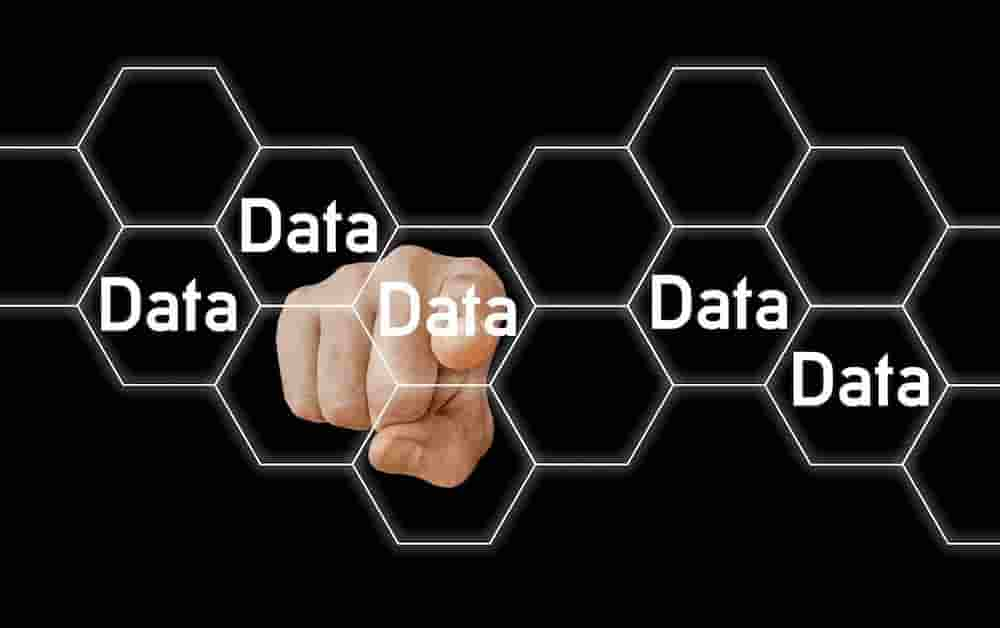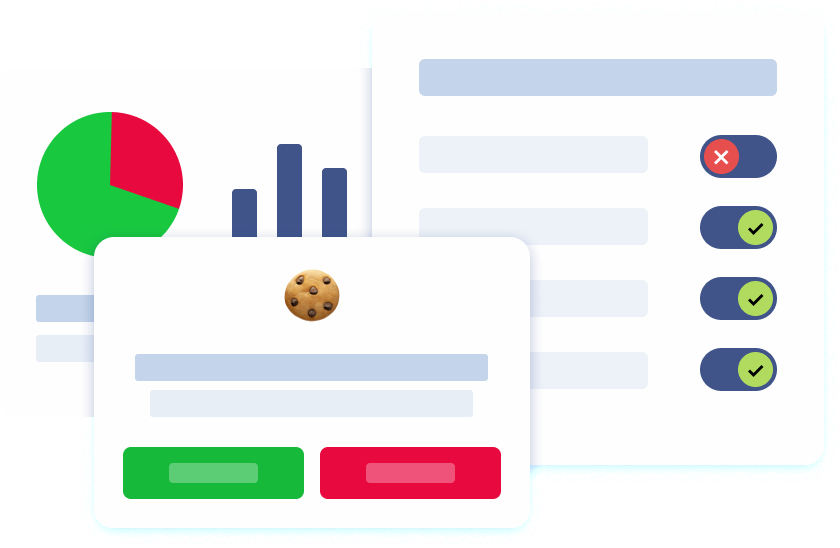Introduction
The data life cycle represents the ongoing process through which information flows within an organization, beginning with data creation and ending with data destruction. The data lifecycle encompasses all stages necessary to ensure that enterprise data is accurate, secure, and usable throughout its journey. Whether an organization is handling raw data, structured data, or unstructured data, understanding the data lifecycle stages is crucial for optimizing operations, ensuring compliance, and extracting meaningful insights.
Effectively managing your organization’s data throughout its lifecycle requires implementing strategies and policies that maximize data value, ensure security, and maintain compliance from creation to deletion.
Data lifecycle management (DLM) provides the framework and tools necessary to manage this process effectively. Sometimes referred to as data lifecycle management DLM, this discipline ensures that sensitive data is secured, data retention policies are followed, and data quality remains consistent across systems. With efficient data lifecycle management, companies can better manage data, reduce risks from data breaches, and improve overall data usability. By leveraging data management software, businesses can create a reliable infrastructure that supports innovation, data integration, and decision-making across departments.
Data Creation and Collection
The life cycle begins with data creation, where new data or data generation occurs through a variety of sources. This may include customer data collected from e-commerce platforms, IoT device readings, mobile applications, data entry, or internal business processes. As the pace of data generation accelerates in the digital age, organizations are flooded with both structured data (like databases and spreadsheets) and unstructured data (such as emails, documents, images, and videos).
After creation, the next stage is data collection, which involves strategies to collect data accurately and consistently. Without careful planning, data collection can introduce inconsistencies, duplicates, or irrelevant records that undermine data quality. Establishing clear data governance policies ensures that only relevant data is gathered, reducing the risks of data silos and improving data accuracy. For example, businesses may use surveys, tracking tools, or transaction logs to gather information, which then undergoes data validation and categorization before entering data management systems.
It is essential to focus on managing data from the point of creation and collection to ensure data integrity, compliance, and security throughout the entire data lifecycle.
Data Processing and Analysis
Once collected, the data undergoes a transformation during the data processing stage. Here, data cleaning, data validation, and data transformation are performed to ensure that the information is accurate, consistent, and aligned with organizational requirements. This process converts raw data into processed data, which can then be used for data analysis. With the support of data management software and modern data lakehouses, organizations can handle vast amounts of enterprise data more efficiently, preparing it for deeper insights.
The next step is data analysis, where data analysts are responsible for creating data visualizations, interpreting data insights, and supporting decision-making processes across various stages of the data lifecycle. Data scientists are key professionals involved in advanced analytics tasks, such as predictive and prescriptive analytics, and in analyzing complex data for strategic insights, often working alongside data analysts and other stakeholders in the data analysis process. These professionals apply techniques like machine learning, artificial intelligence, statistical modeling, and data mining to identify patterns, predict future outcomes, and support decision-making processes. Data visualizations are a key component of the data usage phase, supporting business analysis and stakeholder communication by transforming data insights into accessible dashboards and reports. By improving data literacy within an organization, data interpretation becomes more accessible, empowering stakeholders to act on meaningful insights quickly and confidently.

Data Utilization
Data utilization is a pivotal stage in the data lifecycle, where the true value of information is realized. Once data has been processed and analyzed, it becomes a powerful asset for organizations, enabling them to make informed decisions, refine business strategies, and optimize day-to-day operations. At this stage, data lifecycle management ensures that only high-quality, relevant data is made accessible to the right stakeholders, supporting a culture of data-driven decision-making.
Effective data utilization relies on robust data analysis and intuitive data visualization tools, which transform complex datasets into actionable insights. By presenting information in clear, visual formats, organizations empower teams to quickly interpret trends, identify opportunities, and respond to challenges. Maintaining data quality and security throughout this process is essential, as it builds trust in the data and ensures compliance with internal and external standards.
With a strong data lifecycle management framework in place, organizations can confidently leverage their data to drive innovation, enhance customer experiences, and maintain a competitive advantage in their industry.
Data Governance and Integrity
Data governance is essential to ensure that managing the data lifecycle aligns with compliance requirements and organizational goals. It encompasses rules and frameworks for data access, data sharing, and data security, ensuring that the right individuals can use the data at the right time. Effective data governance policies help prevent data loss, data breaches, and data silos, while also reinforcing data confidentiality and data privacy.
Data governance policies also support effective data usage by ensuring that data is accessed, analyzed, and applied appropriately within the organization to inform decision-making, improve workflows, and optimize data sharing practices across different departments and external partners.
At the core of governance is data integrity, which guarantees data accuracy, completeness, and consistency across systems. Organizations employ data encryption, data protection protocols, and controlled data access measures to safeguard sensitive data. As threats of data breaches grow, data security has become central to ensuring trust in organizational systems. By applying data governance principles, companies protect active data and archival data, supporting compliance and long-term data usability.
Data Storage and Preservation
Data storage and preservation are foundational elements of the data lifecycle, safeguarding an organization’s information assets for both immediate and future needs. This stage involves selecting the right data storage solutions—whether on-premises, in the cloud, or through hybrid models—to ensure that data is both accessible and secure. Implementing regular data backup routines and robust data encryption protocols protects against data loss, cyber threats, and unauthorized access.
Data retention policies play a crucial role in determining how long data should be stored and when it should be archived or deleted, balancing regulatory compliance with operational efficiency. Secure storage practices, including access controls and audit trails, help maintain data security and integrity throughout the data lifecycle. By prioritizing data storage and preservation, organizations not only prevent costly data loss but also ensure that their stored data remains a reliable resource for future analysis, audits, or business continuity planning.
Ultimately, effective data storage and preservation strategies are essential for maintaining the trustworthiness and longevity of an organization’s data assets.
Data Archiving and Destruction
Not all data is used actively throughout its life cycle. Some archived data must be preserved for compliance, audits, or future outcomes. Data archiving ensures that important archival data is stored securely in an archive storage location, while also reducing the costs of maintaining large volumes of active data. Techniques such as data compression, data backup, and archive storage solutions are applied to ensure that archived records remain accessible when needed.
Eventually, some data reaches the end of its useful life. Data destruction ensures that obsolete or redundant information is permanently removed to prevent misuse. This step is critical for sensitive data, especially in industries governed by strict data retention regulations. Proper data destruction safeguards against accidental leaks and ensures compliance with data governance policies. Together, data archiving and destruction uphold data integrity, reduce storage costs, and keep organizations aligned with regulatory expectations.
Benefits of Data Management
Effective data management provides a wide range of benefits, from improving data quality to enhancing data security. By implementing robust data lifecycle management, organizations can ensure data accuracy, streamline data flows, and improve the usability of data across teams. Consistent data cleaning and data validation practices help reduce errors, enabling companies to generate meaningful insights more reliably.
Cost optimization is another key advantage. Proper data backup, replication, data archiving, and tiered storage strategies minimize expenses by storing data in cost-efficient ways. Moreover, data management ensures compliance with global regulations such as GDPR or HIPAA, enhancing trust with customers and preventing fines. With an emphasis on data protection, data confidentiality, and data governance, organizations can strengthen resilience against data loss and data breaches while enabling data-driven innovation.

Challenges in Data Life
Despite its benefits, managing the entire data lifecycle presents challenges. The growing complexity of data flows, rapid data generation, and new forms of unstructured data increase the difficulty of maintaining data accuracy and data quality. Data silos, where information becomes isolated within departments, remain a persistent issue, limiting data sharing and reducing data integration across systems.
Security and compliance also create significant obstacles. The rising frequency of data breaches, combined with evolving data protection regulations, puts pressure on businesses to adopt secure, automated, and compliant solutions. Maintaining control over customer data, protecting sensitive data, and ensuring data privacy are ongoing responsibilities. Addressing these challenges requires not just advanced data management software but also a culture of data literacy and continuous process improvement.
Implementing Data Life Cycle
Implementing an effective data lifecycle management program requires careful planning, investment in tools, and adherence to data governance policies. The first step is to map out the stages of the data lifecycle and evaluate the current state of an organization’s data landscape. This involves identifying active data, archival data, and sensitive data while assessing risks related to data security and data loss.
A successful program aligns with business objectives and ensures that data lifecycle stages are well-coordinated. Organizations can use data lifecycle management software to automate processes such as data backup, data encryption, data cleaning, and data archiving. Regular audits and monitoring help evaluate progress, while continuous improvements ensure that managing the data lifecycle remains efficient. By reducing risks and maximizing data value, implementation efforts deliver measurable business outcomes.
Best Practices for Data Analysis
Data analysis is one of the most valuable aspects of the data life cycle, and following best practices ensures accuracy and effectiveness. Leveraging advanced tools like machine learning and artificial intelligence enables data analysts and data scientists to uncover hidden patterns, enhance data interpretation, and predict future outcomes. Combining these methods with data mining and data transformation creates opportunities for generating deep data insights.
Visualization and communication are equally important. Data visualization tools transform processed data into clear dashboards, making data usability a priority across teams. Data literacy training empowers employees to interpret results effectively and avoid misinterpretations. To stay competitive, businesses must foster a culture of continuous learning, keeping data analysts updated on emerging techniques in data management and data analysis. This ensures that organizations consistently extract the maximum value from their data.
Conclusion
The data life cycle is not a one-time effort but an ongoing process that drives decision-making, compliance, and long-term business growth. By systematically managing each of the data lifecycle stages—from data creation and data processing to data archiving and data destruction—organizations can ensure data quality, protect sensitive data, and maximize the value of their information assets.
Automating workflows, ensuring compliance, and investing in robust data lifecycle management strategies are essential for reducing risks such as data loss and data breaches. With the right mix of data governance policies, data management software, and a focus on data literacy, businesses can unlock the full potential of their organization’s data.
For more information and to address common questions and concerns, refer to our Data Lifecycle FAQ section, which provides answers to frequently asked questions about the data lifecycle.



